Close Encounters of the Insect Kind
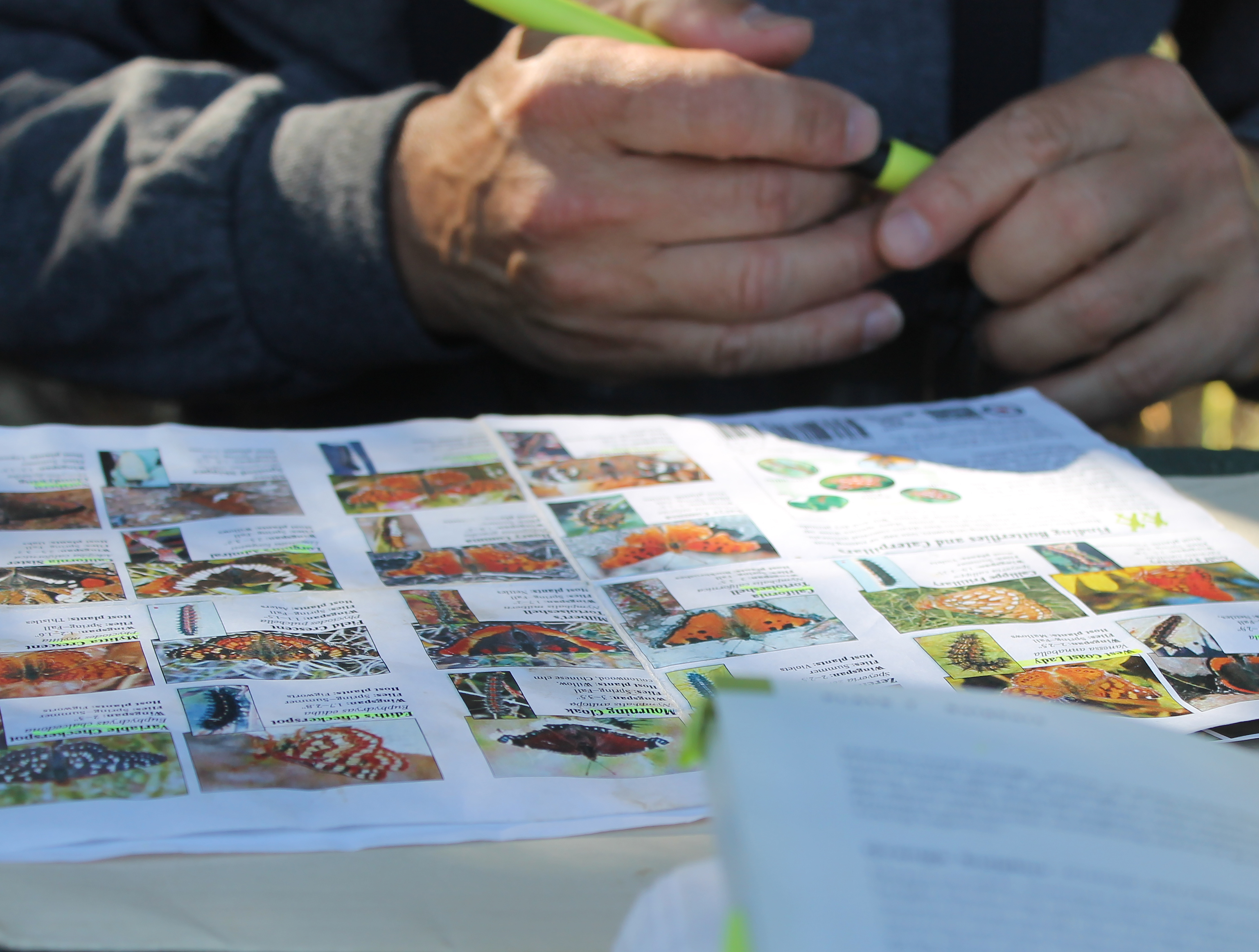
During a quest for unidentified flying objects, you keep your eyes to the sky.
It only takes a second for a flash of yellow to flutter by or a streak of black to wave in the wind. If you’re biological sciences professor Don Miller, you can identify them from 50 feet away, calling out scientific names and committing sightings to memory.
If you’re me, you flip through Field Guide to Butterflies and simply marvel at how fast they move.
“It’s harder to catch them than you might think,” admitted fellow spotter Jon Aull.
I had visions that my participation in the 2017 Butterfly Count at the Big Chico Creek Ecological Reserve (BCCER) would be like Close Encounters. I’d come home with beautiful macro shots of butterflies on my Canon and exquisite details about the dozens of winged wonders we tallied for the day.
Instead, I settled for 31 butterflies—only one species of which I could identify on my own—and added a telephoto lens to my birthday list.
That’s OK, because the butterfly count is as much about visiting BCCER as it is citizen science, said Aull, the education and research coordinator for the University’s ecological reserves.
“I like to introduce people to what we have out here and all the diversity,” Aull said.
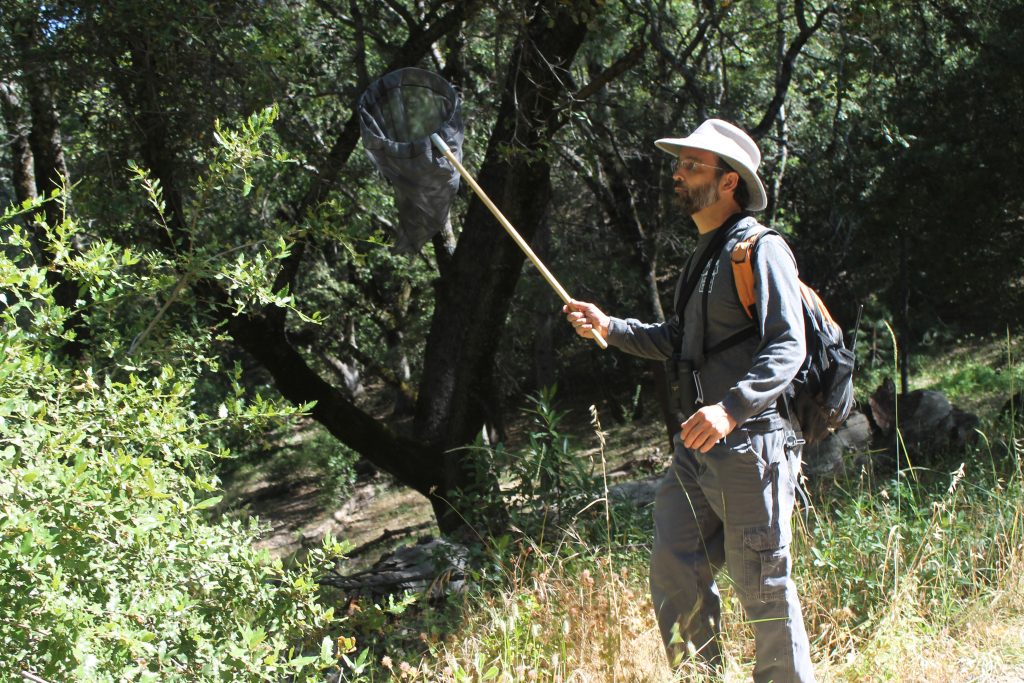
His own Field Guide to Butterflies is well-thumbed, streaked with highlights, and flagged with dozens of yellow tabs. This marked his fourth year as part of the BCCER’s butterfly count, but it’s been going for more than a decade.
“Back then, it was footloose and fancy-free. We just went out and looked,” Miller said. “Now, we have to count.”
Aiming to monitor populations over time, the butterfly count is the North American Butterfly Association’s response to the Audubon Society’s Christmas Bird Count. The target is July 4 but the survey can be done anytime between June and August.
In Northern California, it’s critical to count before flowers dry out and there is still enough nectar to support the population.
I scoured Meriam Library in preparation, yanking book after dusty book off the shelf in hopes of finding something like Butterflies for Beginners, an illustrated guide I could combine with my BCCER species list. The morning of the count, Miller taught a crash course on area butterflies, with assurances that “it’s shaping up to be an exceptional year.”
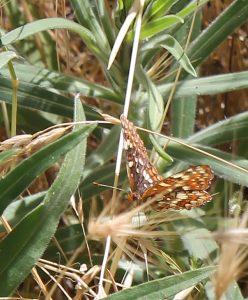
He promised to see lots of common ringlets, California tortoiseshells, and common buckeyes. Orange sulphurs were likely, as were the goldhunter’s hairstreak. He also had hopes for a Gorgon copper and a rural skipper, which allegedly looks like a fighter jet when it lands.
BCCER counters also boast recording more Sylvan hairstreaks than anyone in the nation or the world.
“They are our champs. It’s our badge of honor,” Miller said.
He and other butterfly aficionados at the table regaled us with tales of spotting nearly 100 echo blues in a bush across Big Chico Creek the previous year.
“If you need to swim, then swim. It might come to that,” said Miller, with a not-so-teasing glance at our crew.
When he finished, my companion leaned over and whispered to me, “I don’t think I’m qualified for this!” Neither was I, I assured her, but we were extra eyes for spotting and the pros would do the determining.
Our heads swimming about spots, wingspans, and host plants, we set off with our tally sheets. While the other groups tromped down to Big Chico Creek and out to Musty Buck Ridge, my foursome was dropped at the top of 14 Mile House Road and began treading slowly downhill, speaking in hushed, reverential tones.
“I don’t know why we are whispering. They can’t hear us,” Aull said, with a laugh.
We looked, we looked, and we looked some more. Finally, we spotted a tiger swallowtail, darting among a laurel tree.
Next, I proudly spotted a checkerspot on a blade of dry grass, its wings softly folding in and out. But by the time I closed in for a photo, it danced away through the treetops.
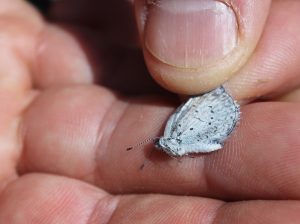
Butterfly net in hand, I briefly entertained bucolic visions of children darting through knee-high fields of green grass. In reality, netting these fast fliers requires stealth and cat-like reflexes, with a swoop and a snap to close off the exit.
Spotting a flutter near a bush, Aull demonstrated his snatching skills. He pinned the tiny insect between the soft netting so he could take a closer look, and after eyeing the spots on the underside and its pale blue wings, he had just started to speculate if it was a echo blue when it slipped from his gentle grasp and flew to freedom.
These butterflies, they are elusive creatures.
Then, in a small clearing, I spotted movement above some winding green vines. Pipevine butterfly territory, Aull proclaimed, and sure enough, we spotted not only a few iridescent black beauties but also a couple of caterpillars, munching their way through the vegetation with snail-like speed.
It was a good sign.
“We think of butterflies as ambassadors for wildlife,” Miller said. “If they are doing well, then the other varieties of wildlife—birds, plants, mushrooms—are doing OK, too.”
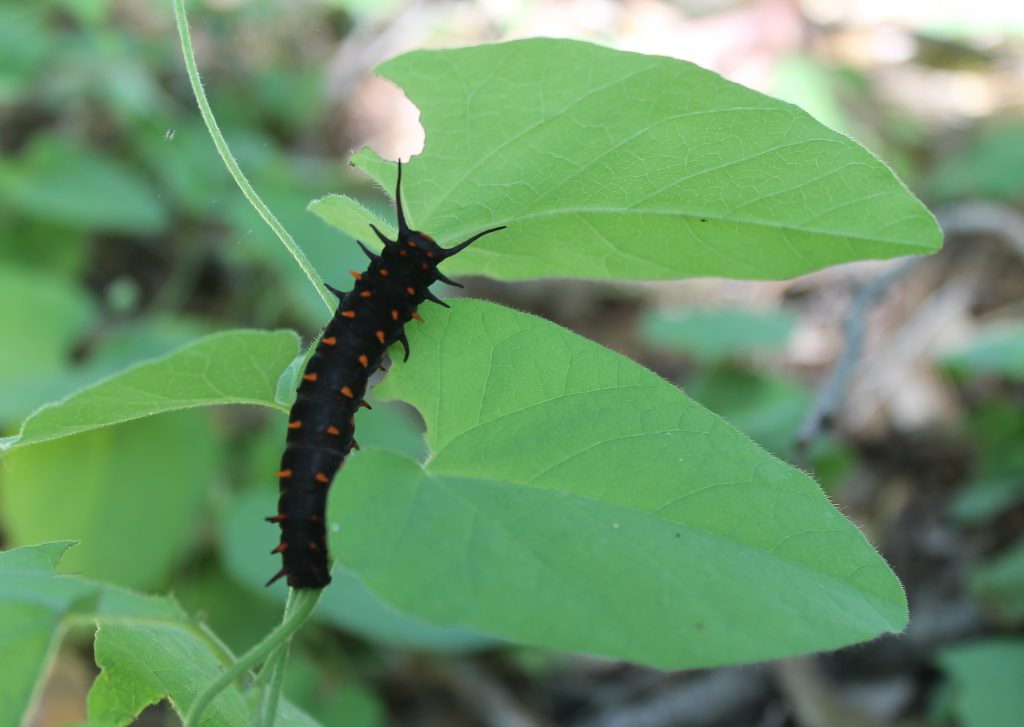
Our final tally?
- 1 California sister
- 11 pipevine
- 4 Western tiger swallowtails
- 6 echo blues
- 1 painted lady
- 1 large white skipper
- 6 Boisduval blue
- 1 Northern checkerspot
Some of the other UFO spotters had better luck. The total for the BCCER group was 34 species, with 820 individual butterflies, including five large white skippers—which was totally remarkable considering the species was previously unseen at the reserve.
My butterfly count complete, I may not have earned my citizen scientist merit badge but I definitely got bit by the butterfly bug. Now, every time I see a flash of color sprinting through the sky, I can’t help but wonder, “Was that a UFO or perhaps a two-tailed swallowtail racing past, looking for a few flowers?”


